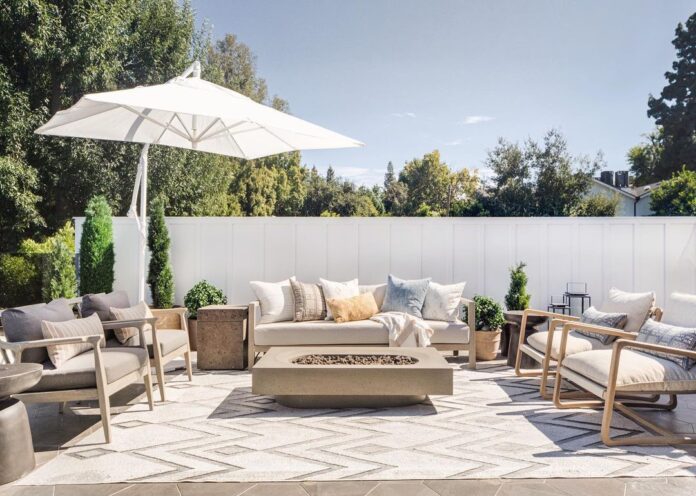Pavers are available in various surface finishes, shapes, and colors. These can be combined in multiple patterns to create eye-catching floor designs for patios, walkways, and driveways.
Both concrete and paver patio can improve a home’s curb appeal and raise its appraisal value. However, the choice of material is an important consideration that should be made based on three key factors:
Versatility
Concrete pavers can be used for various projects in your outdoor spaces, from pathways and patios to pool decks and driveways. They can be laid in patterns to create eye-catching floor designs and coordinate with various architectural styles, including traditional and contemporary.
Pavers are also superb for steps and stairs because they add beauty and texture while providing sturdy, safe surfaces for walking and wheeling. Pavers tie the space together when matched to the surrounding garden or lawn.
Pavers withstand the weight of vehicles and pedestrians just as well as standard concrete slabs, and they can be used with liquid or electric snow melting systems to ease snow removal and reduce slip hazards. They don’t deteriorate from the freeze-and-thaw cycles of winter as asphalt and conventional slabs do, and they are quickly plowed or blown clean of snow.
Durability
Concrete pavers are much more durable than poured concrete and withstand years of wear and tear. They do not crack like conventional poured concrete slabs and will retain their attractive appearance longer than asphalt patios.
Paver stones are also more resilient than wood and natural stone, making them less prone to damage from snow shoveling and rapid freeze-thaw cycles. Because of their durability, concrete paver patios will require less maintenance and are more cost-friendly than replacing a damaged slab of concrete or other paving materials.
Pavers can be used to create a variety of eye-catching designs. For example, using pavers of a similar color throughout a yard can connect different spaces. Adding accent borders or contrasting paver colors can add depth to a design. You can use moss or decorative pebbles to fill the gaps between pavers.
Aesthetics
Concrete pavers give your outdoor space a more sophisticated setup than smooth concrete slabs. They come in various colors, shapes, and sizes to create the perfect look for your home and garden.
To prevent settling beneath your paver patio, use a string and a level to draw a straight line across the area where you want to install the paving stones. Mark this location and dig out the soil within the lines.
Pavers evoke an earthy, natural feeling that complements any outdoor space. Here, oyster concrete pavers set in a running bond pattern tie together the interior of this porch with the landscape design. Irregular paver stones in a cool gray palette correlate to the slope that hugs this courtyard, connecting the spaces.
Ease of Installation
Concrete slabs are poured into forms to create specific shapes and designs, but pavers give contractors greater design freedom. This allows them to develop eye-catching floor patterns that compliment the architectural style of your home.
Before installing your paver base, ensure the soil is well compacted. Rent a vibrating plate compactor or use a garden hose with a mist setting.
Patio pavers come in various styles and colors, making them perfect for nearly any outdoor space. To add a bit of pizazz, consider filling the gaps between pavers with moss, sand, or colored pebbles. This will give your hardscaping a fresh, organic look. In addition, if one paver is damaged, you can easily replace it without redoing the entire project.
Value
Concrete pavers are a cost-effective way to increase the value of your outdoor space. They also offer a versatile design, making them an ideal choice for various styles and budgets.
Before beginning your project, call 8-1-1 to have the utility companies mark the location of any underground services in your yard. Once the lines are drawn, stake out the area for your patio.
Work with a landscaping expert to determine the base material you need. Use a wheelbarrow to move the heavy materials, and wear a mask to avoid breathing in dust. Then, tamp down the soil to remove air pockets and prevent pooling. Once the base is installed, add a coarse sand layer and sweep it between the joints.


















